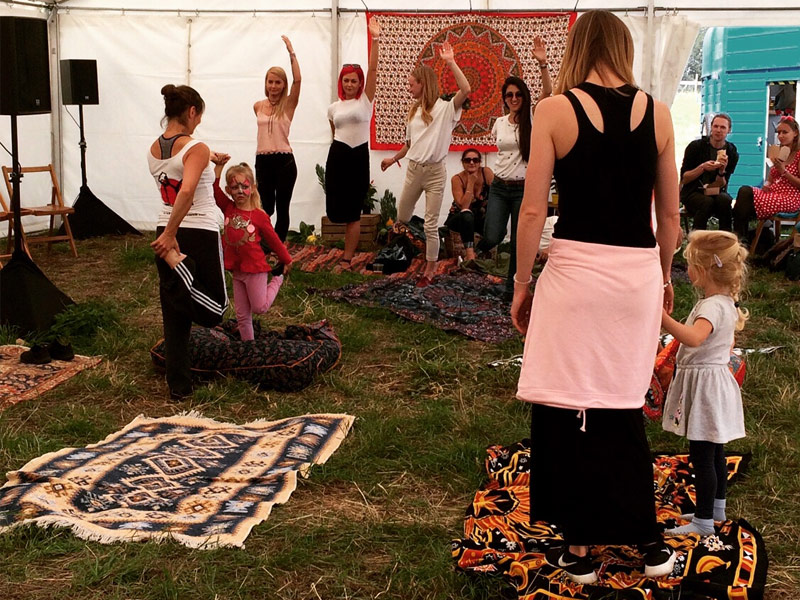What yoga and mindfulness can do for Child and Parent Wellbeing
As seen in Parental Choice, 18 March 2018
https://www.parentalchoice.co.uk
Yoga and mindfulness are the buzzwords of the year, maybe the decade: at the gym, at work, or even in the classroom. Everyone seems to love it, because everyone seems to be stressed these days. But is it all just hippie hype, or can yoga really help you and your child achieve mental well-being and become closer and more relaxed in a world which puts more and more demands on adults and children alike? Yes, it can! And here is how…
Yoga is not just about physical exercise but also voluntary respiration (called Pranayama), in which practitioners control the duration of inhalation, exhalation and retention of breath. The benefits of mindfulness – the practice of becoming consciously and fully aware of the present moment without judgment – are closely related to the scientific benefits of Pranayama. Indeed, the two work very well together, as discovered by molecular biologist Jon Kabat-Zinn, whose MBSR (mindfulness-based stress reduction program) was formed in the 1970s and combines non-religious elements of Buddhism, yoga and zen. Amongst other things, it includes a seated meditative practice called “body scan” which is designed to calm the mind, reducing anxiety and depression and lowering your blood pressure and sugar levels. Like many yoga exercises, it also helps regulate emotions and physical awareness, and increases memory and concentration.
In addition to increased flexibility, muscle strength, injury protection and cardio and circulatory health, yoga can in this way strengthen one’s respiratory system both in the short- and the long-term. And with a more efficient intake of oxygen, subtle chemical changes take place in the body, including the production of calming oxytocin and endorphins. This is in fact supposed to occur naturally and automatically after a bout of stress but, because today most of us are in a permanent state of stress, our bodies are losing the ability to calm themselves: voluntary respiration helps activate the nerve that regulates this. In other words: we can learn how to trigger the hormones that allow us to regain and retain self-control.
Today’s world is full of stress factors, which our ancestors and even our parents’ generation did not have to deal with. My company, Pathak Yoga, was founded out of the growing recognition in the corporate world that less stressed employees are more productive employees. Accordingly, our main focus in on teaching yoga in offices, which helps make employees healthier and – therefore – employers happier. But children’s stressors have increased too: tablets, mobile phones, increased television consumption and rising demands at school (not to mention the stress we parents can cause them).
Because of this, a fresh trend is growing towards teaching yoga and mindfulness to children. The dynamic stretches of yogic movements as well as hand gestures train co-ordination skills; active stretches train children to hold a position rather than restlessly moving around, thereby calming their minds and letting them focus o
n deep breaths, which is a great tool for helping empower and de-stress children through a greater understanding of their bodies and emotions.
As with the broader practice of mindfulness, it’s important to note that none of this changes the situation you’re in: it simply helps change the way we look at – and therefore deal with – our experience of it. By recognising and accepting that “negative” emotions are just as much part of life as positive ones, we can take a great deal of their sting away. As a parent, it is not always easy to stay calm around your children, and what often compounds a feeling of stress is the fact that you end up revisiting situations in which you wish you’d reacted differently. By using the right tools, we can learn to forgive ourselves and accept situations for what they are, both at work and at home. It can also help us treat our children with more understanding and kindness when challenging situations want to hinder us from it.
Yoga, whether together with your child or alone, is a great way of obtaining those tools that let us relax, learn to deal with overwhelming situations, and to recharge our batteries – all of which makes it even more pressing to devote time to yourself and to give your children the same tools you are equipping yourself with. After all, being a parent is stressful, but so is being a child: not being understood by adults can lead to frustration and so-called “tantrums”. But children lack the experience and self-awareness to become calm without outside guidance. Give them the tools to do so and you’ll reduce stress on your children, on yourself, and in your working life. And you’ll have yet another regular opportunity to strengthen and deepen the bond with your child.


